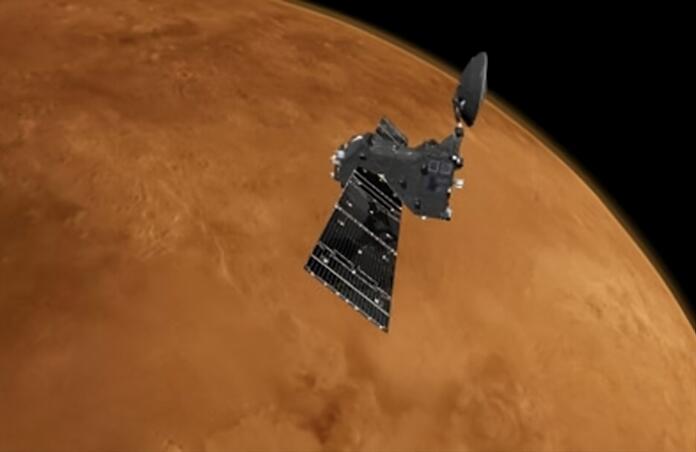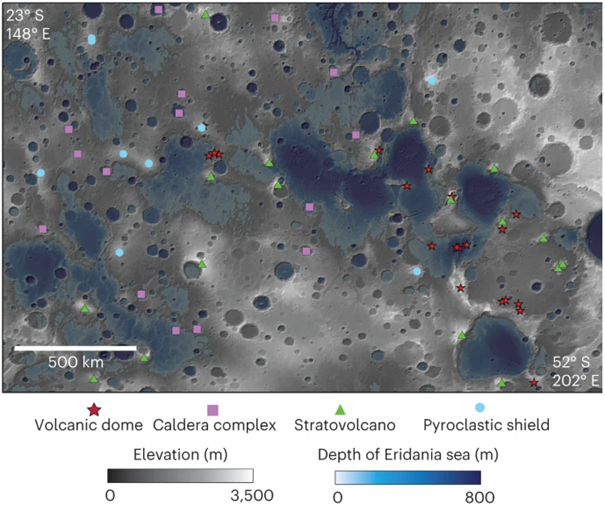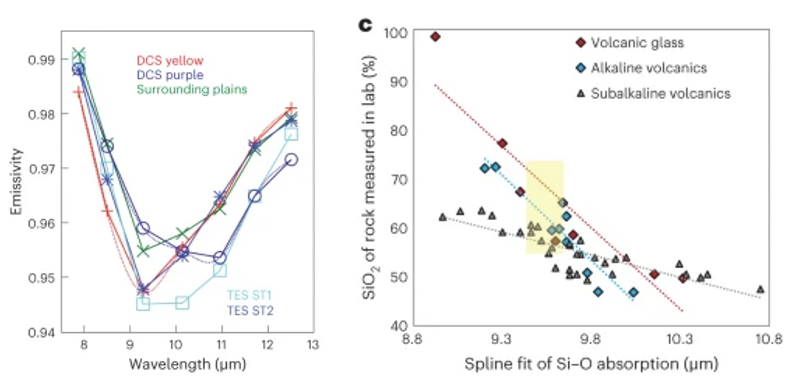Ancient Martian Volcanism Provides Evidence for Vertical Tectonic Activity

Earth's geology is uniquely characterised, within the solar system, by its layered differentiation and active plate tectonics, facilitating ongoing crustal recycling. In contrast, Mars, often dubbed a one-plate, basaltic world, showcases a simpler geological history. As the name suggests, the Martian surface is predominantly composed of basalts, suggesting a past marked by vigorous volcanic activity. However, this barren structure of material reveals the planet’s evolution was impacted by negligible tectonic movement, which would otherwise rejuvenate its composition. This has been historically quite insightful into the early formation and composition of the solar system, which has largely been preserved within the Martian crust.
However, a study led by Joseph Michalski discusses recent evidence of more complex volcanic features, which they suggest was driven by advanced tectonics. Their study investigates in and around a prominent feature of the southern hemisphere of Mars, known as the Eridania basin.

The study leverages data taken by the Mars Reconnaissance- (MRO) and Mars Odyssey Orbiters (MOO), as well as other archival data. These captured infrared spectra, as well as high resolution images of the Martian surface. From these, features within the basin could be analysed, and composition could be interpreted from spectra of the light reflected off of the surface.
It has been long known that Mars has housed what are known as shield volcanoes. These are basaltic volcanoes, formed by continuous eruptions of low viscosity lava, slowly building up their distinct, low-lying form. It was thought that early volcanism on Mars was largely driven by such volcanoes. The study highlighted diverse volcanic formations within the basin, including ash shield volcanoes, which are built from layers of volcanic ash instead of basalt, and stratovolcanoes, dome-like structures formed by more viscous lava flows. Additionally, it described calderas, which are large, hollow depressions formed when a magma chamber erupts and the surface above collapses.
Excitingly, the collected spectra showed features between 8 and 12 μm, which Michalski et al associated with vibrational transitions of the SiO. Based on the intensity of these lines, and comparing these to lab samples, they conclude the silicate abundance in the region to be ~60%, or under ideal circumstances, as high as 75%. This discovery was quite surprising as these do not fall under the basaltic minerals the Martian surface is ordinarily associated with.

Based on the abundance of silicate material, and the complexity of the features seen on the Martian surface, the team suggested that the martian crust had been subject to vertical tectonic activity. In vertical tectonics, crustal segments may be uplifted without the horizontal displacement characteristic current day terrestrial plates.
The study showcases the novel understanding that significant crustal recycling is capable of occurring within tectonic regimes dominated by vertical motions. While it is believed that similar activity has also shaped the Earth's surface, any geological indicators of this activity have been significantly altered or erased by subsequent geological processes, such as erosion, sedimentation, and plate tectonics, making them difficult or impossible to identify in the present-day geological record. However, identifying this activity on planets with similar early evolution allows us, by analogy, to infer the evolution of our own planet.
--
Journal Source: J. Michalski et al, Diverse Volcanism and Crustal Recycling on Early Mars, Nature Astronomy, 2024, https://doi.org/10.1038/s41550-023-02191-7
Cover Image: ESA/Trace Orbiter
